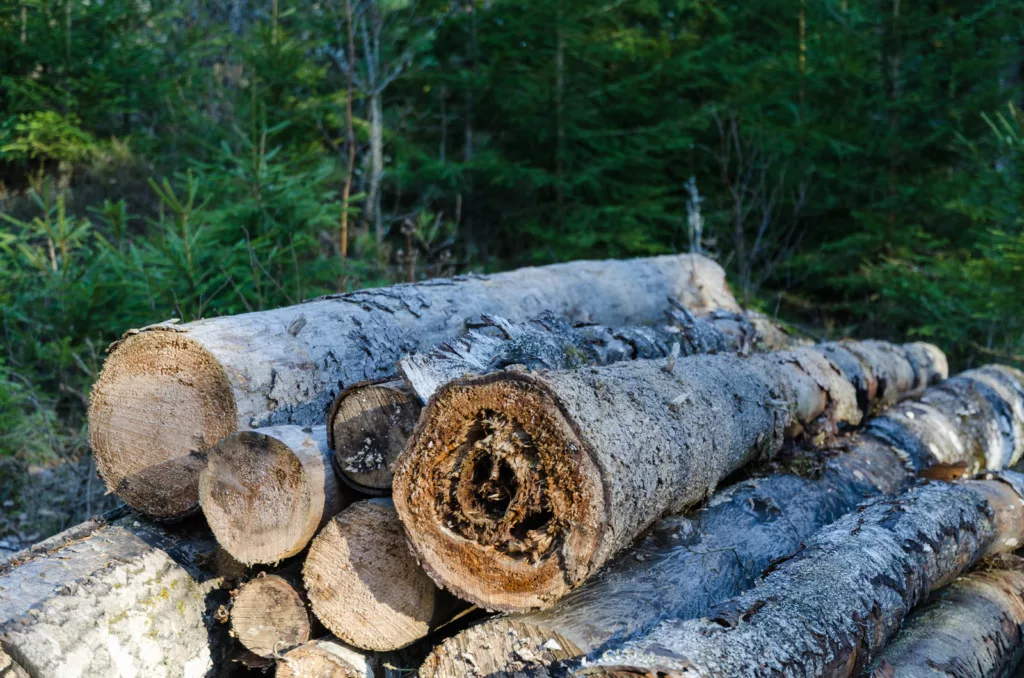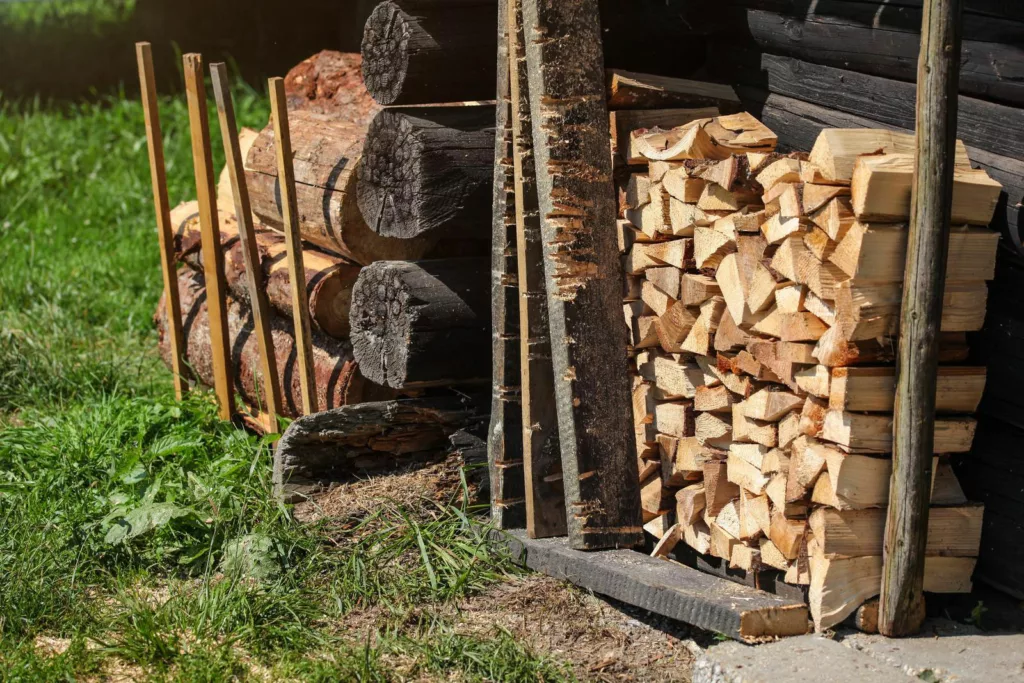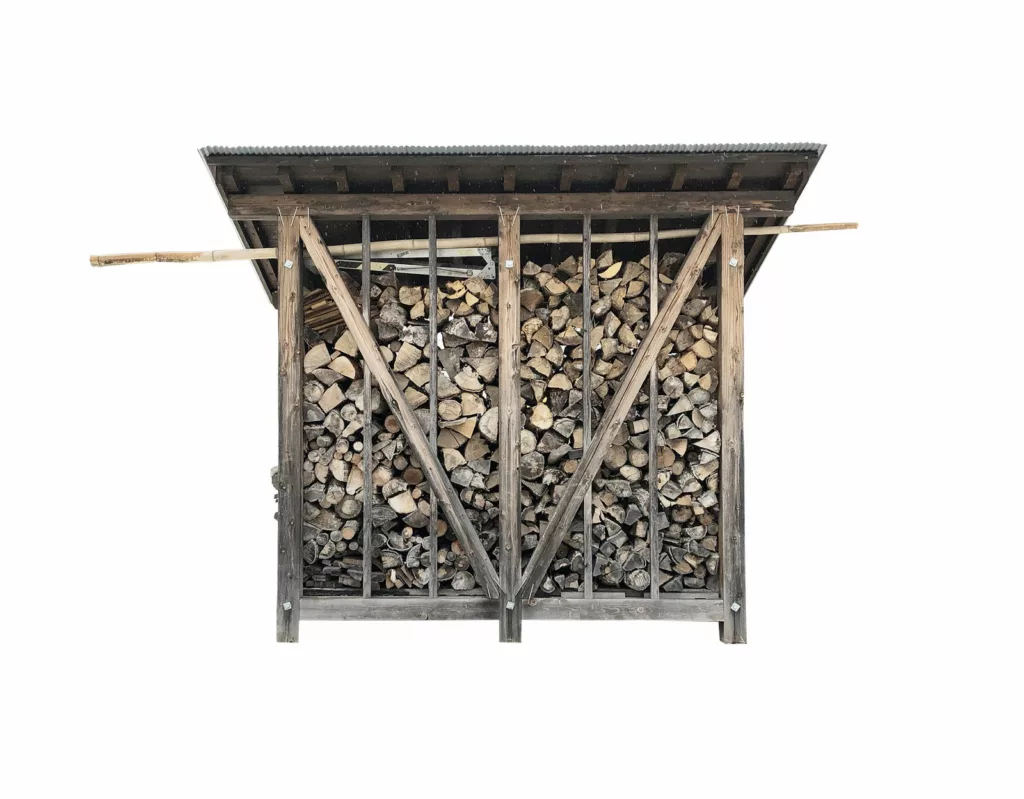If you use firewood, you likely have come across rotten firewood. Unlike well-seasoned wood, rotten firewood is dense and cannot produce adequate heat. Aside from that, burning rotten firewood may pose a significant health risk. For these reasons, every firewood user must learn how to tell if firewood is rotten.
Thankfully, there are many ways to know if your firewood could be better. Typical signs you should look for include discoloration, cracks, and fungi growth on the wood. In this article, you will learn to tell if firewood is rotten and if you can still use it.
Should You Burn Rotten Firewood?
In a few cases, it may be okay to burn rotten wood, especially if it has not started to crumble. However, if you suspect your wood is rotten, it is better to use it outdoors than indoors. Aside from the fact that it won’t give off much heat, it may also produce harmful creosote.
It is also highly probable that your rotten firewood has become a host for bugs and termites. For this reason, you should never burn rotten firewood indoors. It may not be much of a problem outdoors, but if used in your home, your house may become infected with critters. To be 100% safe, you should store firewood 10 feet away from your house.
Additionally, burning rotten wood releases a muddy smell that is unsuitable for your health. Burn rotted wood in your chimney releases moisture, fungus, mold, and bacteria into your home. These microorganisms can leave you with a bad headache, a stuffy nose, or a severe allergic reaction. Hence, to be safe, it is better to discard firewood if you suspect it is rotten.
How Can You Tell If Firewood Is Rotten?
As previously mentioned, there are many ways to confirm if your firewood has gone bad. Sometimes, the signs may be apparent. Other times they may be subtle.
Below are a few tell-tale signs that you can use to confirm the health status of your firewood.

Firewood Pile With Rotten Logs
Visual
You can quickly tell if your firewood has gone bad just by looking at it. Rotten firewood will show obvious signs of decay. Inspect the firewood for discoloration, cracks, spongy areas, and mushroom or fungi growth. Also, it is likely rotten if the wood crumbles in your hands or when hit.
Smell
Smelling firewood is one of the best ways to know if your firewood is good or bad. Good firewood will smell earthy. Rotten firewood, however, will smell musky. Due to the high level of water and moisture in it, rotten firewood is a haven for mold and decay. The decay causes it to release a cruddy smell.

Well-seasoned Firewood
Moisture
Good firewood should have a moisture level that is lower than 20℅. Using a firewood moisture meter, check the moisture level of your firewood. If it is higher than 20℅, then the wood is likely rotten. If you do not own a firewood moisture meter, split the wood and check for water inside. and you find that it has water, discard it; it is rotten.
Larvae or Insects
Insects and bugs like to build their colonies in damp, rotten wood. So, checking for larvae or insects is an excellent way to check if your firewood is rotten. To do this, split a piece of firewood and see if you find bugs inside. Sometimes, these insects hide deep in the wood and may not be easy to spot. In that case, soak a small piece of wood in water. Come back after 15 minutes and see if you find bugs in the water.
Sound
You can also use sound to tell whether your wood is rotten. You can tap two pieces of firewood together or tap them on the ground. Good firewood will give off a ringing sound when hit together. Rotten firewood, however, will sound hollow due to moisture. If it sounds hollow, you should discard it.
How to Store and Prevent Firewood From Rotting
You cannot completely protect your firewood from harsh elements. However, there are a few methods that can help you to prolong your wood’s life. They are as follows;

Stack Of Firewood
Inspect The Wood Before Storing
Use a moisture meter and check the moisture level of your wood before storing it. If you stack wet firewood together with dry ones, the wood will likely rot and infect the others.
Store Wood In A Clean, Dry Area
It would be best to always store firewood in a clean, dry, and well-ventilated area after it has been well-seasoned. You can also wrap your firewood with a tarp to stop it from collecting moisture.
Check Your Firewood Regularly
Inspect your firewood regularly for signs of rot. Use the indications described in the previous section to tell if your firewood is rotting. You can salvage the usable pieces if your wood is rotten by cutting off the rot. If the wood is beyond saving, discard it before it affects others.
Build a Wood Box
You can also build a wood box for storing your firewood. A wood box will help to shield your firewood from the elements. The more you can keep your wood from moisture and wood-nesting insects, the longer it will last.
Invest In A Firewood Rack
It is always best to store firewood in a shed with a roof. To last longer, your wood should also be exposed to wind and sun to dry it out. Investing in a firewood rack with a cover is also a good option. A firewood rack makes it easier to stack and keep your firewood covered.

A Pile Of Stacked Firewood
Conclusion
Most homeowners need firewood for campfires or to keep them cozy around the fireplace. However, if you do not know how to tell if firewood is rotten, you may get sick from using rotten wood. Fortunately, this article teaches you how to know rotten firewood by smell, appearance, and other factors. You have also learned if burning rotten firewood is safe and how to extend your wood’s lifespan. With these tips, you can quickly tell rotten firewood from good wood and safely enjoy your time by the fire.
